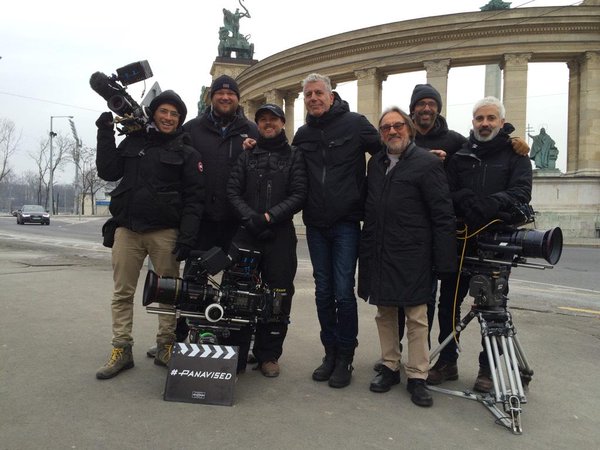If you’ve been following the show for any period of time, you’ve probably picked up on the fact that I’m a hopeless cinematography geek—that everybody who works on the show is a cinematography geek. That we’re the type of people who, in their spare time, sit around talking about directors of photography we love, films whose looks we are inspired by, and whenever possible emulate (if not outright rip off). It’s expected of the people who work with me. If you don’t know who Gregg Toland is—or Vittorio Storaro or Chris Doyle—chances are you’re not going to make it on the “Parts Unknown” road crew. That’s the kind of nerdy, dysfunctional, annoying people we really are.
So, all of us were super-geeked about the gentleman who agreed to take us back to Hungary, the country of his birth, and walk us through some of the locations that figured heavily in the past. His name is Vilmos Zsigmond, and he is the cinematographer responsible for some of the most strikingly beautiful, iconic images in the history of film. His work on Robert Altman’s “McCabe & Mrs. Miller” changed the craft forever. He also shot such films as “The Deer Hunter,” “Deliverance,” “Close Encounters of the Third Kind,” “The Long Goodbye,” and many, many others.
In 1956, he was fresh out of film school when the Hungarian people rose up, and to everyone’s amazement, seemed to sweep their Soviet occupiers right out of their country. For a few short days, it seemed too good to be true. And it was. The Soviets returned in force, rolling tank columns into Budapest and brutally crushing any resistance. With a camera “liberated” from their film school, young Vilmos and his close friend and fellow film student Laszlo Kovacs (later to also become a legendary cinematographer), filmed all of it at great peril. They took to the streets and shot everything they could. The uprising, the street fighting, reprisals against the despised secret police, and the overwhelming response by the Soviets. With the film cans under their arms, determined to show the world what had happened, they snuck across the border into Austria and began the long journey that ended up, strangely enough, in Hollywood.

So we are taking a very unique, very personal look at what is, without question, one of Europe’s most stunningly beautiful cities. I was kicking myself throughout the shoot for the fact that I hadn’t been there earlier. If you are into architecture porn, Budapest is for you. One incredible building after another. Block after block of what is simply an incredible mix of styles, the imaginations of the creators gone wild during the city’s years of empire. It is really something to see. And I felt like a total rube arriving so late. What took me so long!?
It is also, apparently, the foie gras capital of Europe, so there’s just no excuse for not having come sooner. The food is delicious. The people lovely. The scenery unlike anywhere else on earth.
I can tell you for sure that our camera guys have never been so excited—or intimidated—by a subject. Vilmos may have been only the subject and guide, not the director of photography, but he was always watching. I like to think that his presence—and the magnificence of the location—inspired all of us to do our very best.
A disproportionate number of our greatest photographers and cinematographers seem to have come from Hungary. Noticing that, we reached out to Vilmos—who was kind enough to give us his time, share his life story, walk us through some of it. Having now been to Budapest and seen how incredibly, uniquely beautiful it is, I can well understand how so many visual stylists came from there. It was inevitable.